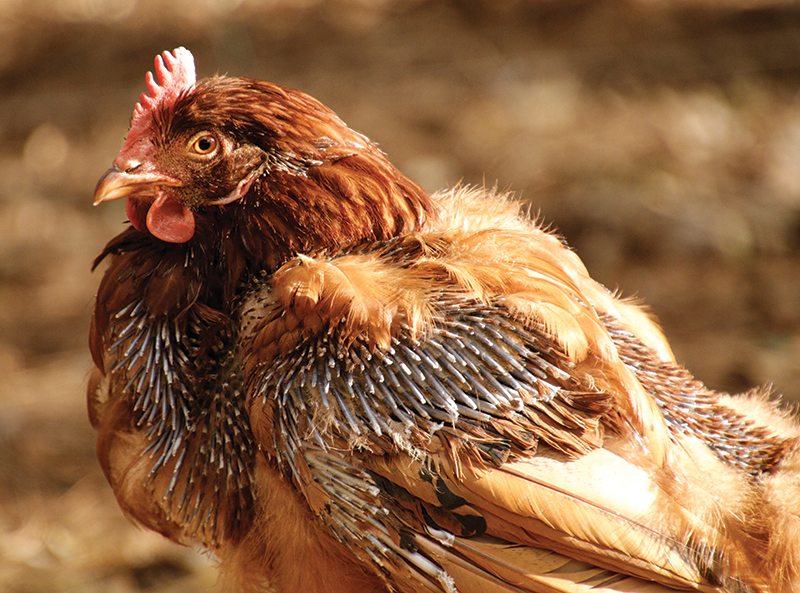
Question
We have five Rhode Island Red chickens that are 1½ years old. When they started laying, we were getting eggs from all of them, but for the past several months, we have only been getting one egg per day, if that. We have one that’s missing her tail feathers and one that is missing feathers under her neck. We are first-time chicken keepers and are stumped. Can you shed some light on this problem for us? —Linda
Answer
Linda, there are lots of reasons why chickens lose feathers. Some include diseases like fowl pox, parasite problems such as mite or lice infestations, and chickens that spar with each other and yank out a few of their adversary’s feathers. Considering the timing and that your hens have practically stopped laying eggs, my guess is that your chickens are molting.
Chickens usually molt once a year. Molting typically begins in late fall as daylight decreases, though older hens sometimes molt twice a year. Molting means their feathers fall out and are replaced by new ones. Feathers are 85-percent protein. And it takes a lot of energy to grow new feathers, leaving little energy for egg production, so most hens stop laying during molt.
Some chicken keepers delay molt by artificially lighting their hen houses 24 hours a day, but hens will eventually molt anyway. According to “Why Did My Chickens Stop Laying?” by Oregon State University, it’s best to turn off supplementary lighting for six weeks each winter so chickens can go into molt all at once.
Molting chickens lose most of their feathers in a set order. It begins with the head, then the neck, chest, body, wings and finally the tail. Some lose a lot of feathers all at once so they’re nearly bald in places. Others molt so gradually that you might not notice feather loss at all. Hybrid layers were developed for quick molt and feather re-growth. They might be through their molt in four to six weeks. Heritage-type breeds tend to molt over a longer period, sometimes taking up to three or four months from start to finish.
Feed Needs
Some chicken owners think that because their hens aren’t laying during molt that they don’t need a high-protein ration. On the contrary, they need extra protein. It stimulates re-feathering and gets them back to laying as quickly as possible. It’s important to keep your hens on a 16-percent protein layer feed or even switch them to 18-percent broiler feed for a month or so. You can also provide high-protein, high-energy treats. Examples include cooked eggs, black oil sunflower seeds, fishmeal, soybean meal, canned tuna, cooked ground beef or cat food.
Molting is stressful to your chickens. Try not to add additional stressors to your their routine. Don’t introduce new birds while your flock is molting, don’t move them to new quarters and don’t handle them any more than necessary.
Keep in mind that molting chickens are otherwise healthy. If your hens seem ill or out of sorts, it best to consult your veterinarian or county extension agent for advice.




